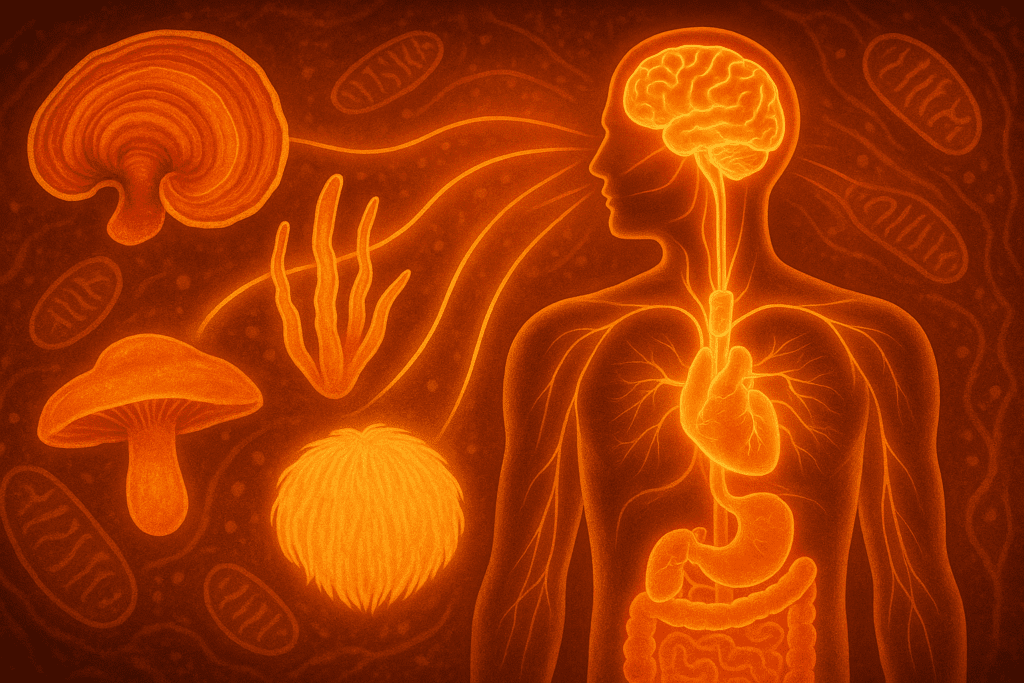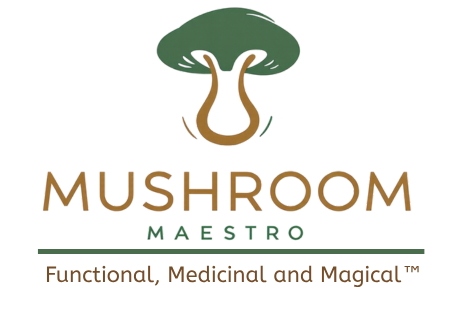In an increasingly fast-paced world, maintaining consistent energy levels can be challenging, especially when preparing for physical activity. For many, the question of how to get energized for a workout is a daily concern that directly influences performance, motivation, and long-term fitness outcomes. Whether you’re an early riser heading to the gym before work or someone who needs an afternoon boost to finish strong, the need for sustainable, non-jittery energy is universal. This is where adaptogenic mushrooms come into play. Known for their powerful effects on stress regulation and energy support, these natural remedies offer a holistic approach to enhancing physical and mental performance. Rooted in centuries of traditional medicine but increasingly validated by modern science, adaptogenic mushrooms have become a compelling focus in the world of health, wellness, and sports nutrition. In this article, we will explore seven research-backed strategies that leverage the unique properties of adaptogenic mushrooms to help you achieve consistent, natural energy before and during your workouts.
You may also like: Unlock Powerful Stress-Relief with Adaptogenic Mushrooms and Stamina Herbal Support

Understanding Adaptogens and Their Role in Energy Metabolism
Adaptogens are non-toxic plants and fungi known for their ability to help the body resist stressors of all kinds—whether physical, chemical, or biological. Adaptogenic mushrooms are a subset of these substances that include varieties such as Cordyceps, Reishi, Lion’s Mane, and Rhodiola-integrated fungi. These functional fungi work by modulating the hypothalamic-pituitary-adrenal (HPA) axis and supporting the balance of key neurotransmitters involved in stress response and energy metabolism. Unlike synthetic stimulants that deliver a rapid spike followed by a crash, adaptogens operate more subtly, supporting homeostasis and long-term resilience.
One of the ways these mushrooms help answer the question of how to get energized for a workout is by increasing the body’s ability to utilize oxygen, optimize mitochondrial function, and enhance endurance capacity. This is especially critical during aerobic exercise, where efficient energy production directly impacts performance. Moreover, adaptogens can buffer cortisol fluctuations, reducing feelings of fatigue and burnout while promoting stable energy throughout the day. Their role in energy metabolism goes beyond just physical exertion; it extends into mental sharpness and emotional well-being, both of which are crucial components of a successful workout regimen.

Cordyceps: The Athlete’s Secret for Sustainable Performance
Among adaptogenic mushrooms, Cordyceps stands out as one of the most effective tools for physical energy enhancement. Traditionally used in Tibetan and Chinese medicine, Cordyceps sinensis and its cultivated counterpart Cordyceps militaris have been shown to improve ATP (adenosine triphosphate) production, the cellular energy currency. This directly contributes to better muscle endurance and reduced fatigue during prolonged physical activity.
Scientific studies have confirmed Cordyceps’ ability to improve oxygen uptake and lung capacity, making it especially useful for aerobic athletes such as runners, cyclists, and swimmers. One double-blind study involving older adults demonstrated that participants who supplemented with Cordyceps experienced significant improvements in VO2 max—a key indicator of cardiovascular fitness. This mushroom also supports nitric oxide production, which enhances blood flow and nutrient delivery to working muscles, facilitating better performance and quicker recovery.
What makes Cordyceps particularly appealing as part of a pre-workout strategy is its ability to provide sustained, jitter-free energy. Unlike caffeine, which can overstimulate the central nervous system and lead to a post-workout crash, Cordyceps offers a more balanced uplift. Integrating it into your routine—whether through capsule supplements, mushroom powders, or adaptogen-infused beverages—can transform your approach to energy management during training sessions. For individuals wondering how to get energy to exercise without relying on synthetic stimulants, Cordyceps is a natural and reliable alternative.

Lion’s Mane: Mental Clarity to Power Your Physical Goals
While most discussions about workout energy focus on physical stamina, mental clarity plays an equally crucial role. Distractions, lack of focus, and low motivation can derail even the best-laid exercise plans. Lion’s Mane mushroom (Hericium erinaceus) is a powerful nootropic adaptogen known for its ability to enhance cognitive function and neuroplasticity. It supports the production of nerve growth factor (NGF), a protein that promotes the growth and maintenance of neurons.
For individuals grappling with pre-workout brain fog or lack of motivation, Lion’s Mane offers a natural solution. By promoting better memory, focus, and mood, this mushroom enables you to mentally commit to your workout routine. It also has a mild anti-anxiety effect, which can be especially helpful if performance anxiety or gym intimidation is a barrier.
Lion’s Mane is typically consumed as a powder mixed into smoothies, teas, or pre-workout drinks, but capsules and tinctures are also available. Because it works cumulatively over time, daily use yields the most significant benefits. Athletes and everyday fitness enthusiasts who include Lion’s Mane in their pre-exercise rituals often report feeling more “in the zone,” suggesting that mental engagement is as critical as physical readiness when determining how to get energized for a workout.
Reishi: Restful Recovery and the Energy of Balance
Though it is often labeled a calming adaptogen, Reishi mushroom (Ganoderma lucidum) plays an integral role in optimizing energy—especially when considering the importance of rest and recovery. Chronic stress, poor sleep, and systemic inflammation can all drain energy reserves, making it harder to find the motivation or physical capacity to exercise. Reishi addresses these root causes by supporting the parasympathetic nervous system, improving sleep quality, and reducing inflammatory biomarkers.
High-quality sleep is a cornerstone of energy restoration. Without it, the body cannot repair muscle tissue, replenish neurotransmitters, or regulate hormones effectively. Reishi enhances the duration and depth of non-REM sleep, allowing the body to truly rest and recharge. Athletes who struggle with sleep disturbances often find that adding Reishi to their nighttime routine helps them wake up feeling more refreshed and ready for physical activity.
Furthermore, Reishi’s adaptogenic properties help modulate immune function, which can be compromised by intense physical training. This dual action—supporting both rest and immune resilience—makes Reishi an invaluable ally in the broader strategy of maintaining consistent workout energy. For those exploring how to get energized for a workout, Reishi offers a more holistic angle, addressing the recovery phase that ultimately determines how much energy you have to expend.

Combining Adaptogens for Synergistic Energy Enhancement
While individual adaptogens offer powerful benefits, combining multiple mushrooms can create a synergistic effect that amplifies their impact. For example, pairing Cordyceps with Lion’s Mane provides both physical stamina and mental acuity, making it ideal for high-performance workouts that demand endurance and focus. Adding Reishi into the mix enhances recovery and stress resilience, supporting long-term consistency and injury prevention.
Formulations that combine adaptogenic mushrooms often include other supportive ingredients such as ashwagandha, rhodiola, or ginseng—each with their own energy-enhancing properties. The key to a successful adaptogenic stack is dosage and timing. Cordyceps and Lion’s Mane are best taken in the morning or before exercise, while Reishi is more suitable for evening use. This creates a natural rhythm of energizing and restoring, helping the body maintain optimal function throughout the day.
Many reputable brands now offer pre-formulated blends that combine adaptogenic mushrooms with electrolytes, B-vitamins, and natural sweeteners. These products are convenient for those who want to streamline their pre- and post-workout routines. However, it’s also possible to create custom stacks by sourcing individual powders and adjusting the ratios based on personal needs. This level of customization is particularly appealing to biohackers and wellness enthusiasts seeking precision in their health regimens.
The Role of Adaptogens in Hormonal and Metabolic Balance
One of the lesser-known but highly impactful ways adaptogenic mushrooms support energy is by influencing hormonal balance, particularly involving cortisol, insulin, and thyroid function. Chronic stress can lead to adrenal fatigue, where the body overproduces cortisol, eventually leading to burnout and energy crashes. Adaptogens like Reishi and Cordyceps help normalize cortisol rhythms, allowing for more stable energy patterns throughout the day.
Additionally, some adaptogenic mushrooms influence insulin sensitivity, which plays a critical role in energy availability. By helping the body more efficiently metabolize glucose, mushrooms like Maitake and Shiitake may indirectly support the energy needed for high-intensity exercise. While these are not typically categorized as primary adaptogens, they still contribute to the metabolic picture.
Thyroid health, another key determinant of energy levels, may also benefit from adaptogen use. Though more research is needed, preliminary studies suggest that the cumulative stress-reducing effects of adaptogens can indirectly support thyroid function. This is especially relevant for individuals with subclinical hypothyroidism or sluggish metabolism, who often report low energy and difficulty initiating workouts.

Adaptogenic Mushrooms as Pre-Workout Rituals: Practical Strategies
Understanding how to get energized for a workout involves more than just choosing the right mushroom; it also depends on how and when you incorporate these adaptogens into your lifestyle. Timing is everything. Most energy-enhancing mushrooms such as Cordyceps and Lion’s Mane should be taken 30 to 60 minutes before exercise. This allows enough time for the compounds to circulate through the bloodstream and initiate their beneficial effects.
Preparation methods can also influence potency. Mushroom powders dissolved in warm water, tea, or plant-based milk are among the most bioavailable forms. Some people prefer capsules for convenience, while others enjoy the ritualistic aspect of brewing a tonic. Adding a source of healthy fat, such as MCT oil or nut butter, can further enhance absorption of fat-soluble compounds.
Consistency is another critical factor. While some effects may be noticeable after the first dose, most adaptogens require sustained use to deliver their full benefits. Establishing a regular schedule not only maximizes efficacy but also turns supplementation into a supportive wellness habit. This makes it easier to stay on track with fitness goals and maintain the drive to keep moving.

How to Get Energized for a Workout Using Adaptogens and Movement Synergy
The phrase “how to get energized for a workout” implies a preparatory process, and adaptogens fit perfectly into this framework when combined with movement-oriented strategies. Dynamic warmups, breathwork, and even low-intensity cardio can synergize with the effects of adaptogenic mushrooms. For example, performing a short sequence of mobility drills or yoga sun salutations while sipping on a Cordyceps-based tonic primes the body both chemically and mechanically for action.
Similarly, integrating mindfulness into pre-workout rituals—such as setting an intention or practicing a few minutes of focused breathing—can enhance the bioenergetic impact of adaptogens. This creates a mind-body feedback loop where mental clarity, emotional grounding, and physical readiness converge. Such practices are particularly useful on days when motivation is lacking, or energy feels stagnant.
Some athletes report that the combination of Lion’s Mane and light aerobic activity serves as a “mental ignition switch,” unlocking a heightened state of alertness and drive. The key is to create a harmonious synergy between supplementation and movement that elevates your energy naturally, without overstimulation or eventual fatigue. This holistic approach redefines what it means to energize before exercise.
Sleep, Stress, and Energy: Completing the Wellness Cycle
No discussion about adaptogens and energy would be complete without addressing the triad of sleep, stress, and recovery. These three pillars form the foundation upon which physical performance and motivation are built. Reishi and other calming adaptogens play a vital role here, helping the nervous system transition from sympathetic (fight-or-flight) to parasympathetic (rest-and-digest) mode.
Consistent, restorative sleep is necessary to rebuild glycogen stores, repair microtears in muscle tissue, and recalibrate the HPA axis. Without this, even the best pre-workout supplements will fall short. Reishi and other relaxing mushrooms such as Turkey Tail may not provide immediate energy, but their indirect impact is profound. By promoting better sleep and reducing inflammation, they ensure that your baseline energy levels remain high, making it easier to get moving when it’s time to exercise.
Additionally, managing daytime stress through adaptogen use helps prevent emotional and physical burnout. Chronic low-grade stress depletes mitochondrial function, disrupts hormone cycles, and reduces the body’s efficiency at energy production. Adaptogens serve as both a shield and a repair mechanism, restoring balance and fortifying the systems responsible for vitality and resilience.
A Holistic Perspective: Integrating Adaptogens Into Daily Life
To fully harness the energy-boosting benefits of adaptogenic mushrooms, it’s important to see them not just as supplements, but as part of a larger wellness ecosystem. Their efficacy increases when paired with other healthful habits such as nutrient-dense eating, consistent movement, adequate hydration, and emotional self-care. This integrated approach creates an upward spiral of health in which energy becomes a byproduct of overall well-being.
Incorporating adaptogens into your routine can be as simple as starting the day with a mushroom-infused latte or ending the evening with a calming Reishi tea. Tracking your energy levels, workout performance, and sleep patterns over time can provide valuable insights into which adaptogens work best for your unique physiology. The more attuned you become to your body’s signals, the more effectively you can use these natural tools to your advantage.
Frequently Asked Questions: Advanced Strategies for How to Get Energized for a Workout
What’s the best time of day to take adaptogenic mushrooms for pre-workout energy?
Timing can significantly influence the effectiveness of adaptogenic mushrooms. For those aiming to boost physical performance, taking Cordyceps or Lion’s Mane approximately 30 to 60 minutes before a workout allows active compounds to circulate and deliver peak support during exercise. Morning workouts tend to benefit more from this timing due to the natural cortisol rise, which synergizes with adaptogens. However, for individuals working out in the late afternoon or evening, it’s crucial to avoid stimulating varieties too close to bedtime—particularly if sleep quality is a concern. To enhance your routine, consider pairing morning intake with hydration and light movement, priming the nervous system and making it easier to sustain energy without needing excessive caffeine.
Can adaptogenic mushrooms replace traditional pre-workout supplements?
While traditional pre-workouts often rely on stimulants like caffeine, adaptogenic mushrooms offer a fundamentally different energy model. They work through hormonal and cellular regulation rather than forced stimulation, making them safer for long-term use. Although they may not provide the same immediate jolt as synthetic stimulants, their impact on stamina, focus, and recovery is often more consistent and sustainable. Adaptogens support mitochondrial health, neurochemical balance, and oxygen efficiency—underlying systems that determine how to get energized for a workout naturally. This makes them especially suitable for people sensitive to stimulants or those seeking cleaner, more integrative energy solutions.
How do social and psychological factors influence workout energy levels, and how can adaptogens help?
Motivation, accountability, and mood have profound effects on energy levels, especially in the context of fitness. Stress from social environments or negative self-perception can significantly lower your drive to move, even if your body is physically capable. Adaptogenic mushrooms like Reishi and Lion’s Mane not only support physiological energy but also help stabilize mood and promote emotional resilience. By reducing anxiety and boosting clarity, they indirectly increase the likelihood of sticking to an exercise routine. In environments where group dynamics or gym anxiety are factors, using adaptogens may tip the scales in your favor, offering calm yet focused mental energy that makes workouts feel more accessible and enjoyable.
What is the difference between using adaptogens for strength training vs. cardio workouts?
Adaptogens interact with various physiological systems, making their effects slightly different depending on the workout style. For strength training, mushrooms that support hormonal regulation—like Cordyceps and Ashwagandha-infused fungi—may enhance muscle endurance and testosterone balance. These are vital in anaerobic activities where explosive power is prioritized. In contrast, cardio workouts benefit more from adaptogens that improve oxygen utilization and lung efficiency, such as Cordyceps and Rhodiola-enhanced fungi. Understanding how to get energy to exercise efficiently means tailoring adaptogen use based on workout type and timing, aligning the mushroom’s strengths with the physiological demands of your chosen activity.
How to get energized for a workout when sleep quality is inconsistent?
When your sleep is compromised, the body’s ability to produce natural energy and focus diminishes sharply. In such cases, relying on stimulants often worsens the crash-recovery cycle. Adaptogens like Reishi and Turkey Tail can serve as a reset mechanism, helping to rebalance circadian rhythms and restore nervous system health. To cope with short-term fatigue, Cordyceps can offer a subtle energy lift without exacerbating insomnia later. For long-term gains, focus on sleep hygiene, calming adaptogens at night, and stimulating varieties in the morning. This creates a foundation from which you can begin to reclaim your energy naturally—essential knowledge when learning how to get energized for a workout amid irregular rest patterns.
Can exercise to boost energy work synergistically with adaptogens?
Absolutely. Engaging in regular movement, even in short durations, enhances mitochondrial function, circulatory efficiency, and neurotransmitter balance. When combined with adaptogens, these effects are amplified through both top-down (brain to body) and bottom-up (body to brain) signaling. For instance, starting your day with a brisk 10-minute walk followed by a Cordyceps tonic can condition your nervous system to associate movement with vitality. Over time, this pairing becomes self-reinforcing, helping to reduce inertia and increase motivation. Adaptogens also help prevent burnout from overtraining by supporting adrenal recovery, making them ideal companions for those using exercise to boost energy on a daily basis.
What role does hydration play alongside adaptogen supplementation?
Hydration is a frequently overlooked factor in energy production, especially when adaptogens are part of the routine. Mushrooms often contain bioactive compounds that influence cellular fluid balance and circulation. Consuming them in dehydrated states can blunt their absorption and reduce their effectiveness. Adding a pinch of natural salt or electrolytes to your adaptogenic beverage can enhance mineral uptake and support adrenal function, which is crucial when figuring out how to get energy to exercise without crashing. Proper hydration also ensures that the detoxifying and anti-inflammatory effects of adaptogens are more efficiently carried out, optimizing both short-term performance and long-term resilience.
Are there any signs that adaptogens are not working for my workout goals?
One common misconception is expecting immediate, stimulant-like results from adaptogens. However, if after consistent use—typically 2 to 4 weeks—you feel no difference in stamina, focus, or recovery, it may be time to reassess dosage, source quality, or even your broader wellness habits. Factors such as poor nutrition, chronic stress, or undiagnosed medical conditions can blunt the effects of adaptogens. Additionally, over-relying on supplements while ignoring sleep, hydration, and mental health creates an unsustainable model. Understanding how to get energized for a workout involves viewing adaptogens as part of a system, not a stand-alone solution, and tracking how your body responds over time through journaling or biometric tools.
How to get energized for a workout without caffeine dependency?
Caffeine, while effective, can lead to tolerance, adrenal fatigue, and sleep disruption if overused. The shift away from caffeine dependency involves developing a broader strategy that includes consistent sleep, nutrient timing, and adaptogen use. Cordyceps and Rhodiola offer an uplifting effect without overstimulating the central nervous system, helping you maintain energy levels without the crash. Gradual reduction of caffeine, while introducing these alternatives, allows the body to rebalance its natural energy rhythms. This approach is particularly valuable for those seeking sustainable ways of how to get energized for a workout that don’t compromise long-term hormonal or neurological health.
What innovations in adaptogenic research could influence future workout supplementation?
Emerging research is exploring how adaptogens influence gene expression related to energy metabolism and cellular repair. Scientists are particularly interested in how compounds in mushrooms like Lion’s Mane and Cordyceps can activate pathways such as AMPK and PGC-1α, which are critical to endurance and metabolic flexibility. Additionally, nano-emulsification and liposomal delivery systems are making adaptogens more bioavailable, meaning future supplements may act faster and more precisely. There is also a growing intersection between personalized medicine and adaptogen use, with genetic testing guiding individualized protocols. As we continue learning how to get energy to exercise through natural means, these innovations will likely reshape pre-workout nutrition and recovery paradigms in exciting and personalized ways.
Final Reflections: The Lasting Power of Nature’s Energy Allies
As the health and fitness world continues to evolve, the timeless wisdom of natural medicine is finding new relevance. Adaptogenic mushrooms represent a powerful, sustainable, and scientifically supported way to enhance both physical performance and overall vitality. They offer a balanced solution to the question of how to get energized for a workout, addressing not just the immediate need for power and focus, but the underlying systems that support long-term health.
From Cordyceps’ oxygen-boosting properties to Lion’s Mane’s cognitive benefits and Reishi’s sleep-enhancing effects, these fungi offer a multidimensional approach to energy that respects the body’s natural rhythms. Their adaptability, safety profile, and versatility make them ideal for anyone seeking to improve their workout energy without compromising health.
In embracing adaptogens, we also embrace a philosophy of energy that is rooted in resilience rather than stimulation. This shift in perspective can transform the way we train, recover, and ultimately thrive. Whether you’re an elite athlete or someone simply striving for more consistent energy, the path to vitality may very well begin in the hidden mycelial networks beneath our feet—nature’s quiet but potent pharmacy of power.
Further Reading:
How to get the energy for a workout
Too tired for physical activity? Here are the top 12 ways to get more energy
